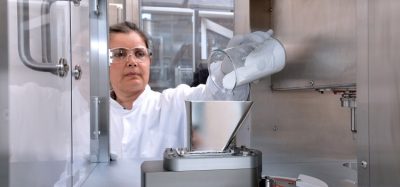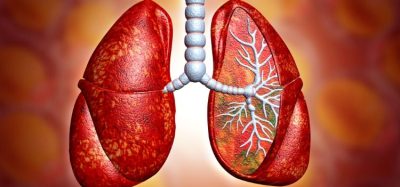Implementing chemometrics in late stage development and manufacturing
Posted: 26 April 2012 |
Chemometrics was defined as a research area in 1974 and developed rapidly through the following decades in parallel with the fast paced improvement in analytical technologies and computational power for lab instruments and sensors. Chemometrics is essentially the translation of measured signals characterising a sample or a process into meaningful results. This is achieved by applying a number of powerful multivariate data analytical techniques (MVA) to develop a model from a representative data set, and use this model to predict or quantify the property of interest for new samples or process runs.
In the pharmaceutical industry, chemometrics has been successfully applied at every stage from discovery, through development, and to manufacturing. In this review, the requirements and benefits to applying chemometrics in late stage development and manufacturing will be discussed.
Two main areas of interest in pharma – ceutical development and manufacturing are QbD (Quality by Design) and PAT (Process Analytical Technologies), and chemometrics, i.e. modelling, is a key element of these approaches. Chemometrics is used for simplicity as the label for any model translating data into meaningful output in the following discussion. To maximise the benefit from chemometrics, the very first step is to define the objective of the model.


Chemometrics was defined as a research area in 1974 and developed rapidly through the following decades in parallel with the fast paced improvement in analytical technologies and computational power for lab instruments and sensors. Chemometrics is essentially the translation of measured signals characterising a sample or a process into meaningful results. This is achieved by applying a number of powerful multivariate data analytical techniques (MVA) to develop a model from a representative data set, and use this model to predict or quantify the property of interest for new samples or process runs.
In the pharmaceutical industry, chemometrics has been successfully applied at every stage from discovery, through development, and to manufacturing. In this review, the requirements and benefits to applying chemometrics in late stage development and manufacturing will be discussed.
Two main areas of interest in pharma – ceutical development and manufacturing are QbD (Quality by Design) and PAT (Process Analytical Technologies), and chemometrics, i.e. modelling, is a key element of these approaches. Chemometrics is used for simplicity as the label for any model translating data into meaningful output in the following discussion. To maximise the benefit from chemometrics, the very first step is to define the objective of the model. This is not unique to chemometrics, but there is a widespread misconception that data of any quality can be analysed and interpreted. To some extent, this is true, but the quality of any findings or conclusions is strongly correlated with the quality of the data. A thorough discussion of data quality is a full review in itself but generically, data should be consistent, relevant and under quality control. Consistency relates to how easily data can be analysed while the relevance relates to how valid any inference from the data will be. Particular attention needs to be paid to the selection of data to be used in the reference set and design of experiments (DoE) is an important tool for this. Quality control is an obvious requirement to ensure that any manually handled data are without typos and any automatically generated data are produced by suitably calibrated and validated systems.
Good quality data can be seen as analyse ready data although additional pre-treatment of the data is usually required before any models can be built. Pre-treatment is understood as data operations which enhance the accessibility to the information of interest in the data and reduce irrelevant features and noise. For spectroscopic data, baseline corrections are typical examples of pre-treatment operations. Scaling of variables to ensure that parameters of different magnitude such as temperature and pressure for instance become comparable is a typical pre-treatment example for process data.
Another important aspect for early planning is that the objective of the project defines the data infrastructure requirements, i.e. the required data systems, data transfer protocols, data flows and storage requirements. If the ambition is to develop a quality control method for use in the laboratory, the infrastructure requirements are very different compared to the objective of developing an online quality control [PAT] method for instance. Companies with ambitions within QbD and PAT should have programs and strategies to deliver the data infrastructure required to support the business ambitions in the area, and if so it is a matter of identifying where the model fits and implement accordingly. Developing QbD and PAT strategies without chemometrics as a key component is a risk as chemometrics is very much the link between measurements and actionable output, i.e. the manufacturing intelligence forming step.
A structured way to work with models in manufacturing is to align model types to the S95 hierarchy which is a standard way of structuring the automation data infrastructure for manufacturing. Adopting this approach simplifies the communication between automation, IT and chemometrics subject matter experts. The S95 levels translate directly into business levels like operational and enterprise so it also becomes easier to assess which business roles need the model outputs and what type of decisions are made by the different models.
The control strategy for manufacturing of a product has a strong influence on the type of model to develop and also the way to present the model output to the user. A model can be used to assess the end product quality by predicting assays from spectra recorded in compression for instance, while another model can monitor the characteristics of input materials using physical properties data. In the first instance the obvious control decision is ‘pass’ or ‘fail’ resulting in accepting or rejecting the tablet, although more advanced use of the model output could be to monitor the closeness to the target assay and to perform precautionary controls if drift or deviation is observed, even if the product is still within the assay limits. In the monitoring of the input materials, the control action is not necessarily ‘pass’ or ‘fail’ but perhaps the materials can be managed to ensure that e.g. the coarser filler is used in products for which this is not a critical quality attribute. Mixing batches of input materials to actively ensure that e.g. the overall size distribution is suitable, is a more advanced control action which can be possible if the right product knowledge is in place.
Whether a company [site] has one model or many models, ownership and use of the models are important questions. Expert skills may be required during development of the model, but it is unlikely that subject matter experts will be available e.g. during manufacturing. This means that any output from the model must be understood by the personnel which is using the model, and this includes both understanding of how to use the results when for example process is on target as well as how to deal with potential deviations or faults. The responsibility sits with the model developer who should ensure that all outputs are self-explanatory, or at least easily grasped by the user group. Models are dynamic and if there are changes to input materials due to change of vendor or seasonal variations for instance, a model assessment is required and potentially also a model update. Additionally, regulatory bodies do require a regular review of models to ensure that the models remain relevant and suitable. The model owner must be able to deal with this type of maintenance operation so a subject matter expert might be required to fulfil the role. However, access to subject matter experts might be limited and if so, the subject matter experts might need to think about how to develop model owners from the user group. With the right insight, this is possible and one way is to standardise the work for calibration models. Using appropriate tools building a calibration model should not require a PhD.
Models are dynamic entities and an obvious model lifecycle can be defined by the following stages:
- Model development
- Model implementation
- Model use: Model monitoring; Model maintenance; Model update
- Model retirement
In order to use any model in a regulated environ – ment quality (version) control is obligatory as well as plans or procedures for how to handle the models at the different stages. In companies which have invested in PAT systems (SIPAT, SynTQ etc) version control is implemented as part of the package. If such systems are not available or if the model is for an area where the PAT system is not relevant, other control solutions are required. The major analysis packages (Simca-P+, Unscrambler, GRAMS AI etc) have audit trails so it is reasonably easy to align the version control with the existing quality system for technical reports for instance. Another obvious solution is to keep track of the model versions using the quality system for laboratory methods.
The benefit of using chemometric models is dependent on what type of model is used and how it is integrated with the control strategy. If the chemometric model is part of a PAT setup to assess assays online, the benefit is related to the replacement of an effort intensive laboratory method. A secondary benefit is that the assay results become available during manufacturing allowing for immediate investigation and possible correction during manufacturing. Other models will provide other types of benefits, and in many instances, routine use of a model enables quantification of quality or performance parameters which is a first step towards real time quality control.
The most robust way for a company to take advantage of chemometrics models is to incorporate the ambitions in the overall company [site] strategy such as the QbD and PAT programme to ensure a uniform imple – mentation. In order to do this successfully a good understanding of chemometrics potential and challenges is required, but almost as important is clarity around the ambitions to ensure that they are specific and deliverable. One point to consider is that the realisation of the benefits can be separated from any upfront investments as well as being absorbed by any parallel change programs leading to a dilution of the perceived benefit. This can of course be counteracted by conscious planning of milestones and success criteria.
A more pragmatic approach to taking advantage of chemometrics is a project-toproject approach where each model is scoped, developed and implemented as a standalone project with corresponding benefit assess – ments. The risk of this approach in larger organisations is diverse and inconsistent implementation of the chemometrics solutions. On the other hand, each project will be adding value and accordingly support instigation of future projects.
There is of course no single right answer to the best approach to utilise chemometrics for all companies as ways of working and company culture are influential on what approach or combination of approaches will have the most impact. However, there are numerous examples of successful chemometrics models in daily use, within pharma and across other industries, so the starting point will be to define the ambition or problem at hand and then explore what is already out there.
About the author
Dr Geir Rune Flåten is currently an independent consultant. He recently left GlaxoSmithKline where he worked as Chemometrician Leader in Global Manufacturing and Supply (GMS) for five years. In GSK he lead a team of chemometrics subject matter experts, developed and implemented MVA strategies including quality systems for models, developed and validated novel chemometrics and PAT methods, developed and validated data analytical tools and supported new product introduction and global supply. Before joining GlaxoSmithKline, he completed a period as a postdoc in Centre for Process Analytics and Control Technology (CPACT). Dr Flåten was awarded his PhD at the University of Bergen.








